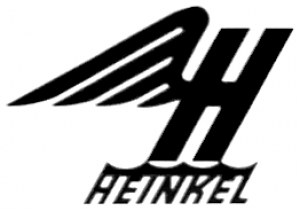Download this manual and access the complete library
Free registration required.
Join Avialogs
Heinkel

Heinkel was established at Warnemünde in 1922, after the restrictions on German aviation imposed by the Treaty of Versailles were relaxed. The company's first great success was the design of the Heinkel He 70 Blitz high-speed mail plane and airliner for Deutsche Luft Hansa in 1932, which broke a number of air speed records for its class. It was followed by the two-engine Heinkel He 111 Doppel-Blitz, which became a mainstay of the Luftwaffe during World War II as a bomber. Heinkel's most important designers at this point were the twin Günter brothers, Siegfried and Walter, and Heinrich Hertel. The firm's headquarters was in Rostock, with an additional "Heinkel-Sud" facility in Schwechat, Austria, after the Anschluss in 1938.
The Heinkel company is most closely associated with aircraft used by the Luftwaffe during World War II. This began with the adaptation of the He 70 and, in particular, the He 111, to be used as bombers. Heinkel also provided the Luftwaffe's only operational heavy bomber, the Heinkel He 177, although this was never deployed in significant numbers. The German Luftwaffe equipped both of these bombers with the Z-Gerät, Y-Gerät, and Knickebein, developed by Johannes Plendl, and thus they were among the first aircraft to feature advanced night navigation devices, common in all commercial airplanes today.
Heinkel was less successful in selling fighter designs — before the war, the Heinkel He 112 had been rejected in favour of the Messerschmitt Bf 109, and Heinkel's attempt to top Messerschmitt's design with the Heinkel He 100 failed due to political interference within the Reichsluftfahrtministerium (RLM — Reich Aviation Ministry). The company also provided the Luftwaffe with an outstanding night fighter, the Heinkel He 219, which also suffered from politics and was produced only in limited numbers.
From 1941 until the end of the war, the company was merged with engine manufacturer Hirth to form Heinkel-Hirth, giving the company the capability of manufacturing its own powerplants.
The Heinkel name was also behind pioneering work in jet engine and rocket development. In 1939, flown by Erich Warsitz, the Heinkel He 176 and Heinkel He 178 became the first aircraft to fly under liquid-fuel rocket and turbojet power respectively, and Heinkel was the first to develop a jet fighter to prototype stage, the Heinkel He 280. This latter aircraft never reached production however, since the RLM wanted Heinkel to concentrate on bomber production and instead promoted the development of the rival Messerschmitt Me 262. Very late in the war, a Heinkel jet fighter finally took to the air as the Heinkel He 162, but it had barely entered service at the time of Germany's surrender.
Following the war, Heinkel was prohibited from manufacturing aircraft and instead built bicycles, motor scooters (see below), and the Heinkel microcar. The company eventually returned to aircraft in the mid 1950s, licence building F-104 Starfighters for the West German Luftwaffe. In 1965, the company was absorbed by Vereinigte Flugtechnische Werke (VFW), which was in turn absorbed by Messerschmitt-Bölkow-Blohm in 1980.





